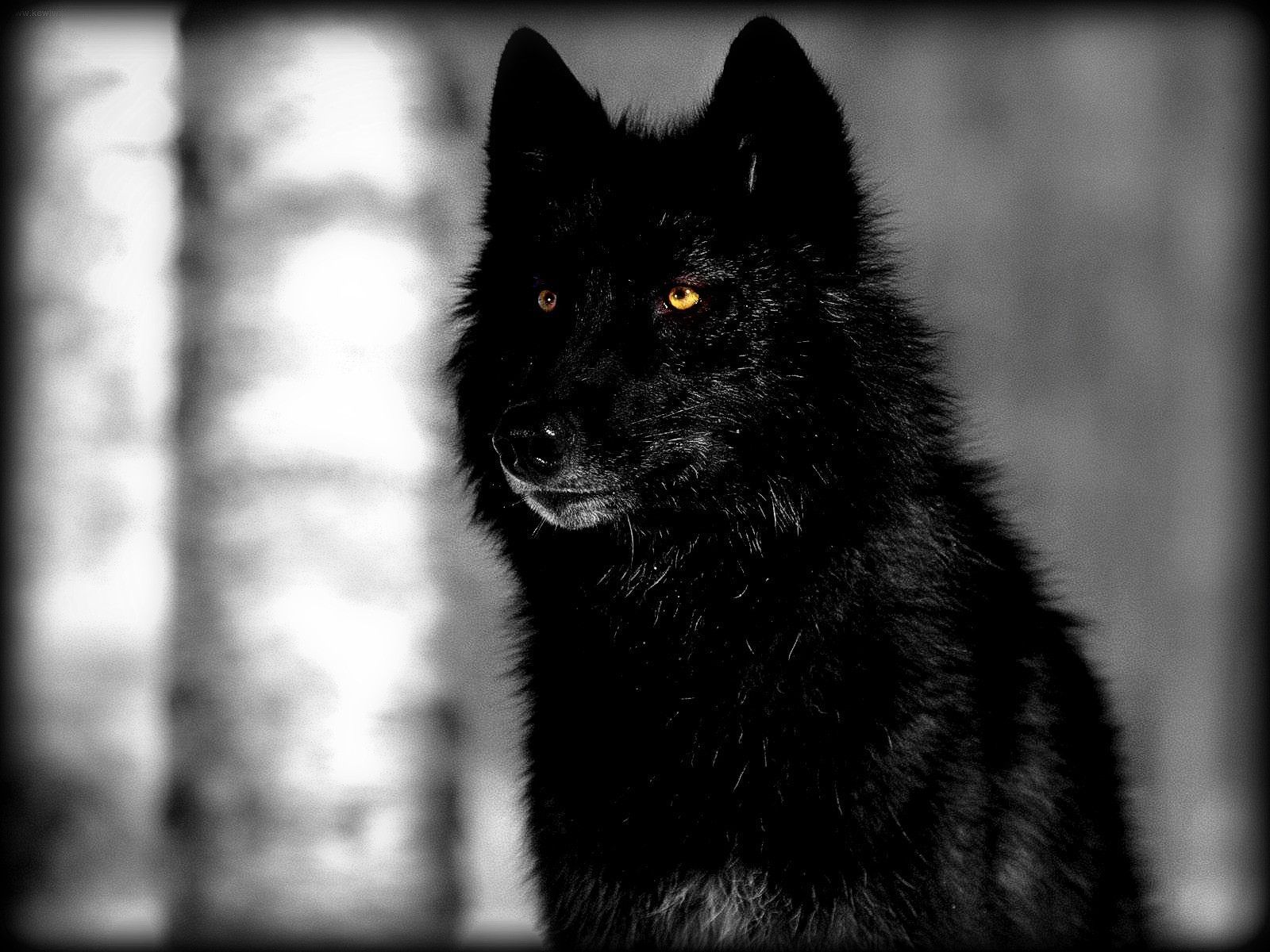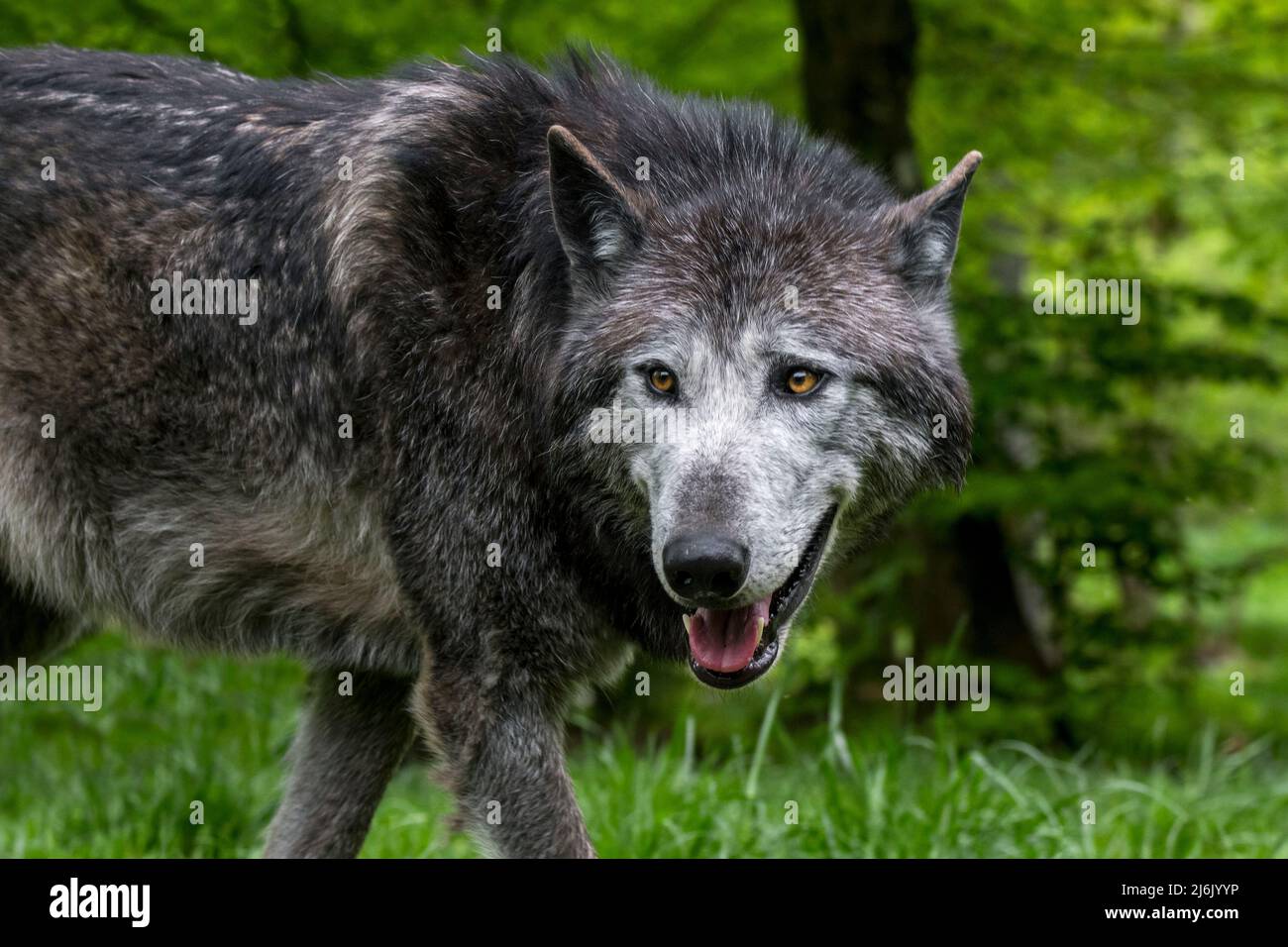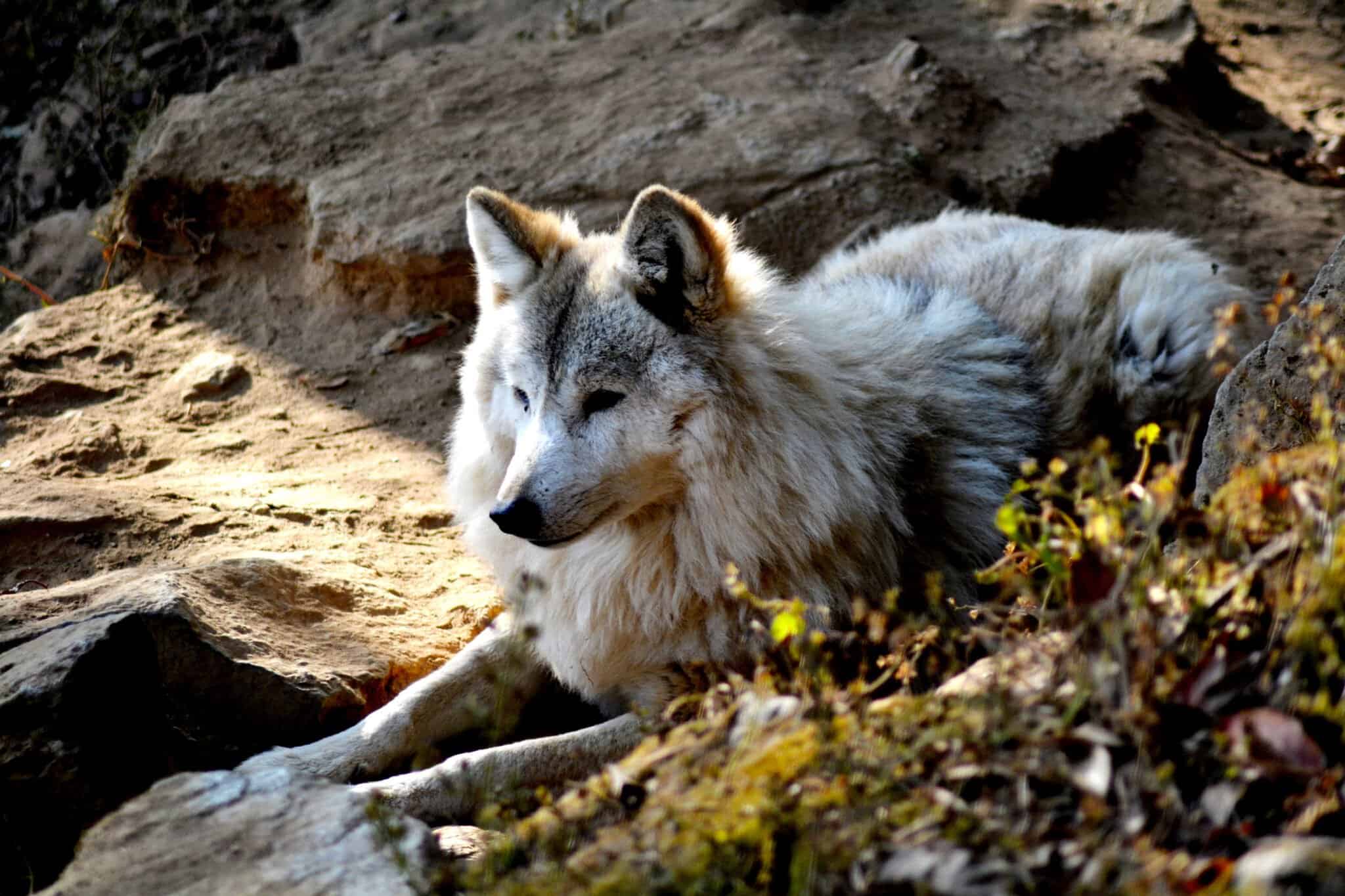Largest Black Wolf
When you think about the animal world, you might sometimes wonder about the biggest, the tallest, or the most imposing creatures out there. It is that sense of wonder, you know, that often makes us curious about things like, say, the largest black wolf. We might picture something truly grand, a creature of remarkable presence. But, actually, figuring out what "largest" truly means can be a bit more involved than it first appears, especially when we talk about a living being.
You see, the idea of "largest" isn't always as simple as it seems. For instance, is something the largest because it takes up the most ground space? Or could it be the largest because it has the most bulk, even if it doesn't spread out as much? It's kind of like thinking about a body of water – the one with the widest top might be called the largest, but then a deeper one, even if it's not as wide, could hold more water and, in some respects, feel like it's the bigger one. This distinction, you know, is really quite important when we try to pin down what we mean by "largest" for something like a majestic black wolf.
So, when we talk about the largest black wolf, we are actually stepping into a conversation about how we define size itself. It makes you think, doesn't it? Is it about how long it is from nose to tail, or how much it weighs? Perhaps it's about its overall surface area, the amount of space its fur covers, or maybe it's about its general mass. These are the sorts of questions, you know, that come up when we try to give a real meaning to the idea of the largest among these magnificent creatures. It's not just a simple number, more or less.
Table of Contents
- What Does "Largest" Even Mean for a Wolf?
- Is "Largest" About How Much Space it Covers for a Black Wolf?
- Or is "Largest" About Its Depth, Perhaps?
- How Do We Measure the "Largest Black Wolf"?
- Thinking About Different Ways to Size Up the Largest Black Wolf
- Why is "Largest" Such a Tricky Word?
- What Happens When We Talk About the "Largest Black Wolf" in a Group?
- The Grammar of "Largest" and How it Relates to a Black Wolf
What Does "Largest" Even Mean for a Wolf?
It's a question that, you know, seems simple enough at first glance. When we say something is the "largest," what exactly are we getting at? Is it about its height at the shoulder, the distance from its nose to the tip of its tail, or perhaps how much it weighs? For a creature like a black wolf, these different ways of measuring could, in fact, point to different individuals. One wolf might be the tallest, while another might be the heaviest, and yet another might have the longest body. So, it really does make you pause and consider what measurement truly counts when we're trying to identify the biggest of the bunch. This is, you know, a very common point of discussion when people try to compare things. It's almost like trying to pick the "biggest" house; is it the one with the most rooms, or the one that sits on the most land? It can be a bit of a puzzle, you know, getting to the heart of what that word means in any given situation.
Is "Largest" About How Much Space it Covers for a Black Wolf?
When we think about something having the greatest surface area, we are talking about how much of its outside is exposed, or how much space it seems to cover. For a black wolf, this might mean the one that appears to take up the most room when it's lying down, or perhaps the one that has the most fur spreading out. It's a way of looking at size that focuses on the two-dimensional spread rather than its overall bulk. A wolf that is long and lean might have a greater surface area than one that is shorter but more compact, even if the more compact wolf weighs more. This perspective, you know, can be quite useful in some cases, but it doesn't always tell the whole story of what we typically think of as "largest." It's just one way to look at it, really, when you get down to it. We often use this idea when we are comparing things that are relatively flat, like pieces of fabric or sheets of paper, but it also applies to the outer covering of a living thing. So, you know, it’s a valid way to consider size, even for a wild animal.
Or is "Largest" About Its Depth, Perhaps?
On the other hand, the idea of something being "deeper" can also play a part in what we consider "bigger." Think about that body of water again: a deep pond might not be wide, but it holds a lot more water than a wide, shallow puddle. For a black wolf, this could translate to its overall volume or mass. A wolf that is very deep-chested and muscular, even if it's not the longest, might contain more body material and therefore be considered "bigger" in terms of its overall substance. This way of looking at size, you know, focuses on the three-dimensional aspect, the actual amount of "stuff" that makes up the creature. It's a different way to measure, and it often aligns more with what people instinctively think of as a truly "large" animal – one that has a lot of presence and bulk. So, in some respects, a wolf with greater depth and mass might feel like the largest, even if another one stretches out further. It's all about how you frame the question, you know, when you're trying to figure out what "largest" means.
- Image Of A Black Bear
- Cyber Monday Sale Air Purifier
- Matilda Musical Trailer
- Cardi B Marge Halloween Costume
- Leslie Mann Younger
How Do We Measure the "Largest Black Wolf"?
When it comes to figuring out the biggest black wolf, there are, you know, different ways to go about it, and each method might give you a different answer. We could talk about its length from the tip of its nose to the end of its tail, or maybe its height from the ground to its shoulder. Then there's weight, which is often a very common way people think about animal size. Each of these measurements gives us a piece of the puzzle, but none of them, you know, tells the complete story on its own. For example, a wolf might be very long but quite slender, while another could be shorter but incredibly muscular and heavy. So, how do we decide which one gets the title of "largest"? It’s not always as simple as just picking one number, as a matter of fact. We have to consider what aspect of "large" we are truly trying to capture. This is a pretty common challenge, you know, when you're trying to compare anything that has multiple dimensions.
Thinking About Different Ways to Size Up the Largest Black Wolf
Consider the concept of a convex shape in a flat space. Its diameter, you know, is defined as the greatest distance you can get between two parallel lines that just touch its outer edge. Now, applying this idea to a black wolf, you could think about its "diameter" as the longest straight line you could draw through it, from one side to the other, or from head to tail. This kind of measurement, you know, helps to give a sense of its overall span. However, it doesn't account for its thickness or its weight. So, while a wolf might have a very impressive "diameter" in one direction, it might be quite narrow in another. This just shows, you know, that there are many ways to measure something, and each one highlights a different aspect of its size. It's a bit like trying to describe a building; you can talk about its height, its width, or its footprint, and each gives you a different piece of information about how big it truly is. So, to really size up the largest black wolf, you probably need more than just one measurement, really.
Why is "Largest" Such a Tricky Word?
The word "largest" seems straightforward, but it often causes a bit of confusion, you know, because its meaning can shift depending on what you're talking about. In mathematics, for instance, talking about the "largest number" is, well, meaningless in the usual system of whole numbers, because you can always just add one to any number and get a bigger one. This highlights, you know, that "largest" isn't always about a fixed, absolute point. It's more about comparison. When we use it for a black wolf, we're inherently comparing it to other black wolves. But what if there's no single, clear way to compare them? What if one is longest, another is heaviest, and a third has the greatest volume? This is where the trickiness comes in. It's not like saying "the highest mountain," where there's a pretty clear single measurement. For a living creature, there are just so many dimensions to consider. So, that's why it's a word that makes you pause and think, you know, about what specific aspect of size you are focusing on.
What Happens When We Talk About the "Largest Black Wolf" in a Group?
Sometimes, when we talk about the "largest" in a group, we're not actually saying it's bigger than half of the group. This idea, you know, is often seen in politics. For example, a "plurality" means you have the biggest piece of the pie, even if that piece is less than half of the whole pie. So, if you had a group of black wolves, and one was, say, the heaviest at 100 pounds, but the next heaviest was 95 pounds, and no other wolf was over 50 pounds, the 100-pound wolf would be the "largest" by weight, even if it didn't outweigh all the other wolves combined. This is a very different idea from a "majority," where something has to be bigger than half. So, when someone mentions the "largest black wolf" in a group, it's worth considering if they mean the one that's simply bigger than any other single wolf, or if they're implying something that truly dominates in size over the whole group. It's a subtle but important difference, you know, in how we understand the word "largest" in a group setting. This is, you know, a pretty common way that words can have different meanings depending on the situation.
The Grammar of "Largest" and How it Relates to a Black Wolf
It's interesting to think about how we use words like "largest" in our everyday talk. "Largest" is what we call a superlative, meaning it's the very top of a quality. We use "larger" for comparing two things, and "largest" for comparing three or more. What's kind of funny, you know, is that while "larger" and "largest" are very common words, others like "huger" and "hugest" are barely used, even though "huge" means very big. This just shows, you know, how language has its own quirks. So, when we describe a black wolf as the "largest," we are making a statement that it stands above all others in some particular measurement. We are saying it has reached the peak of size within its group, according to whatever standard we are using. It's a definitive statement, in a way, that places it at the very top of the size scale. This grammatical point, you know, really emphasizes that "largest" isn't just about being big; it's about being the *most* big. It's the ultimate comparison, basically, when you think about it.

Black Wolf Wallpapers on WallpaperDog

Black Northwestern wolf / Mackenzie Valley wolf / Alaskan timber wolf

The 10 Largest Wolves in the World - A-Z Animals